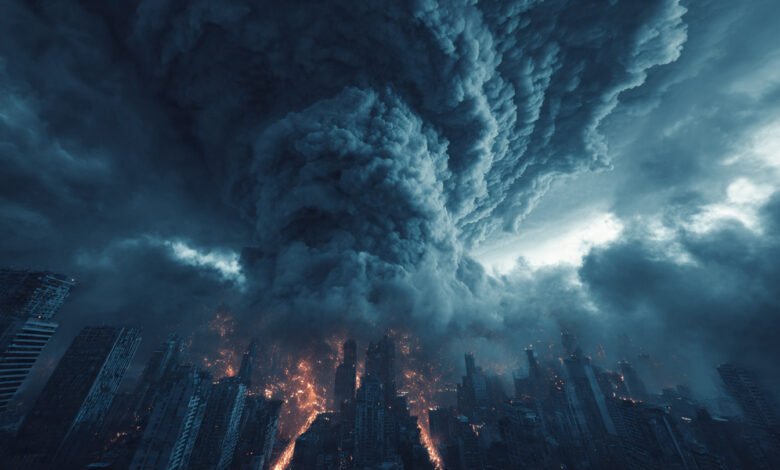Can AI Predict Natural Disasters Before They Happen?
Can AI predict natural disasters? Discover how artificial intelligence is revolutionizing early warning system for earthquakes, floods, and hurricanes.

Natural disasters have long been a formidable challenge for humanity, striking with little warning and leaving devastation in their wake. However, AI (Artificial Intelligence) is emerging as a groundbreaking tool that could revolutionize disaster prediction. By analyzing vast datasets from seismic activity and weather patterns to satellite imagery and social media feeds AI can identify early warning signs that humans might miss. While traditional forecasting methods rely on historical data and manual analysis, AI’s machine learning algorithms process real-time information at unprecedented speeds, offering the potential for earlier and more accurate predictions.
Despite these advancements, the question remains: Can AI reliably predict Natural Disasters before they happen? While AI has shown promise in forecasting events like earthquakes, hurricanes, and floods, it is not yet infallible. Challenges such as data limitations, false alarms, and the unpredictable nature of natural phenomena still pose significant hurdles. Nevertheless, as technology evolves, AI could become an indispensable asset in disaster preparedness, helping governments and communities mitigate risks and save lives. The future of disaster prediction may well depend on how effectively we harness AI’s capabilities while addressing its current limitations.
Can AI Predict Natural Disasters Before They Happen?
Role of AI in Natural Disaster Prediction
Artificial intelligence is revolutionizing the way we approach disaster forecasting. Traditional methods rely on historical data and physical models, which often lack precision. AI, however, can process real-time data from satellites, sensors, and social media to identify early warning signs. Machine learning algorithms analyze seismic activity, weather patterns, and even animal behavior to detect anomalies that precede Natural Disasters. For instance, AI models have been used to predict earthquakes by monitoring minor tremors and ground deformations. Similarly, hurricane tracking has improved with AI’s ability to process oceanic and atmospheric data faster than conventional methods.
AI for Flood and Wildfire Forecasting
Floods and wildfires are becoming more frequent due to climate change. AI assists in predicting these events by analyzing rainfall data, river levels, soil moisture, and vegetation conditions. For example, NASA’s AI systems use satellite imagery to monitor areas at risk of flooding. Similarly, AI-driven platforms like IBM’s PAIRS Geoscope integrate weather forecasts with topographical data to predict wildfire spread. These tools enable governments to issue timely evacuations and allocate resources efficiently.
AI in Earthquake Prediction
Earthquakes are among the most unpredictable Natural Disasters. However, AI is making strides in identifying precursors that may signal an impending quake. Researchers use deep learning to analyze seismic waves, groundwater levels, and even electromagnetic changes in the Earth’s crust. Companies like Google and universities worldwide are training AI models on decades of earthquake data to recognize patterns that humans might miss. While exact prediction remains elusive, AI can provide probabilistic forecasts, helping authorities prepare for Natural disaster.
Challenges and Limitations
Despite its potential, AI-based disaster prediction faces several challenges. Data quality and availability vary across regions, affecting model accuracy. Additionally, false alarms can lead to unnecessary panic, while missed predictions can have devastating consequences. Ethical concerns, such as data privacy and the potential misuse of AI, also arise. Moreover, AI models require continuous updates to adapt to changing environmental conditions. Overcoming these hurdles requires collaboration between scientists, governments, and tech companies.
Future of AI in Disaster Management
Real-Time Threat Detection
AI will analyze satellite feeds, seismic sensors, and weather data in real-time to detect disaster precursors. Machine learning models will identify patterns invisible to humans, like subtle ground shifts before earthquakes. This enables earlier warnings, giving communities critical extra minutes to evacuate safely.
Hyper-Accurate Predictive Modeling
Advanced algorithms will forecast disaster impacts at street-level precision by processing topography, infrastructure, and population data. Flood predictions will account for urban drainage capacity, while wildfire models will track fuel loads and wind changes. Such granularity will optimize evacuation routes and resource allocation.
Autonomous Emergency Response
AI-powered drones and robots will enter hazardous zones to map damage, deliver supplies, and locate survivors. Swarm robotics will coordinate search missions in collapsed buildings, while autonomous boats will conduct flood rescues. These systems reduce risk to human first responders during critical operations.
Climate-Resilient Infrastructure Planning
Generative AI will design disaster-proof cities by simulating thousands of climate scenarios. It will recommend flood-resistant materials, earthquake-adaptive building shapes, and optimal emergency shelter locations. Such proactive planning will mitigate long-term vulnerabilities in high-risk regions.
Ethical Governance Challenges
Biases in training data may overlook rare Natural Disasters, while over-automation could weaken human crisis skills. Strict protocols will be needed for data privacy when using social media to track disasters. International standards must ensure AI assists equitably across all economic regions.
Global Early Warning Networks
UN-led AI systems will share cross-border data on cyclones, droughts, and pandemics. Common machine learning frameworks will let nations pool satellite imagery and sensor feeds. This collective intelligence will be vital for predicting transboundary Natural Disasters.
Public AI Literacy Programs
Citizen training initiatives will teach communities to interpret AI warnings correctly. Gamified apps could simulate disaster responses, while chatbots may guide real-time survival actions. Educated populations will enhance the effectiveness of AI-driven alerts.
Next-Gen Disaster Simulations
Quantum-powered AI will run ultra-complex Natural Disasters scenarios in minutes, testing millions of variables. These simulations will train emergency teams for unprecedented events like mega-tsunamis or multi-hazard crises, building institutional preparedness.
Integrated Human-AI Decision Systems
Hybrid command centers will pair AI predictions with human expertise for balanced crisis response. AI will handle data analysis while humans oversee ethical judgments and community communications, ensuring technology augments rather than replaces critical thinking.
Self-Healing Smart Cities
IoT sensors and AI will create urban systems that automatically adapt to Natural Disasters. Smart levees will reinforce themselves before floods, while AI traffic lights will redirect vehicles during evacuations. This dynamic infrastructure will minimize damage when Natural Disasters strike.
Read More: How Artificial Intelligence Is Helping Scientists Explore the Cosmos
Conclusion
AI (Artificial Intelligence) has demonstrated remarkable potential in revolutionizing how we anticipate natural disasters. By processing vast amounts of data from satellites, sensors, and historical patterns, AI systems can identify early warning signs of earthquakes, hurricanes, floods, and wildfires with increasing accuracy. While these technologies are not yet perfect and false alarms remain a challenge, they represent a significant leap forward in disaster preparedness. As machine learning algorithms grow more sophisticated and datasets expand, AI’s predictive capabilities will likely improve, offering vulnerable communities precious extra time to evacuate and prepare.
However, the question of whether AI can reliably predict natural disasters before they happen still requires cautious optimism. Technical limitations, data gaps, and the inherent unpredictability of natural phenomena mean AI should complement rather than replace traditional monitoring systems and human expertise. The future of disaster prediction lies in integrating AI with robust early-warning infrastructure, international collaboration, and public education. If responsibly developed and deployed, AI could transform global resilience against natural catastrophes, saving countless lives and reducing economic devastation in an era of climate change.
FAQs
Can AI accurately predict earthquakes?
AI can identify patterns and precursors but cannot yet predict exact timings or magnitudes with complete accuracy.
How does AI help in flood forecasting?
AI analyzes rainfall, river levels, and soil data to predict flood risks and issue early warnings.
What are the limitations of AI in disaster prediction?
Challenges include data inconsistencies, false alarms, and the need for continuous model updates.
Is AI being used for wildfire detection?
Yes, AI processes satellite imagery and weather data to predict wildfire outbreaks and spread patterns.
Will AI replace human experts in Natural Disasters management?
No, AI complements human expertise by providing faster data analysis, but human judgment remains essential.











One Comment